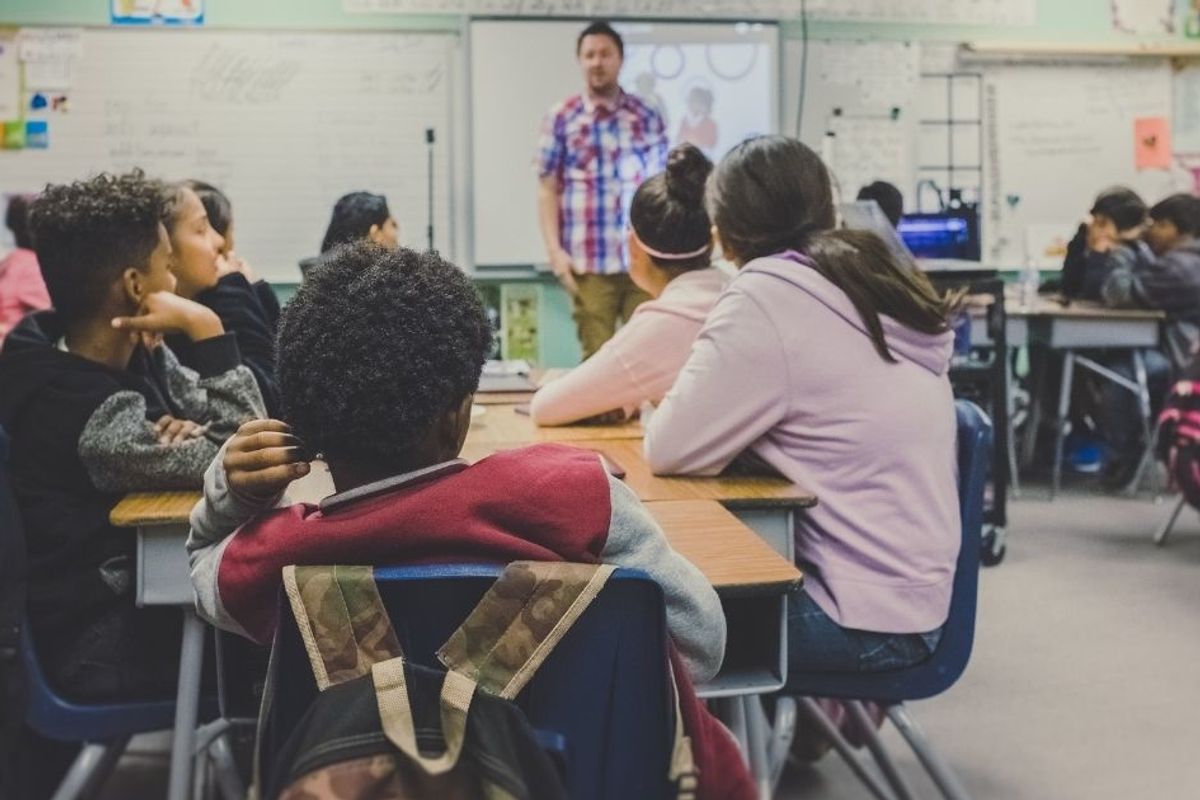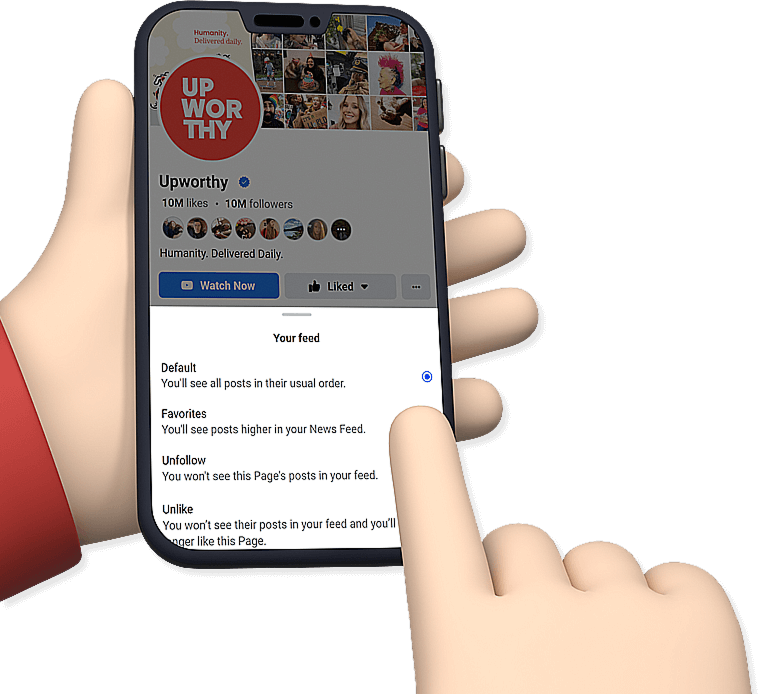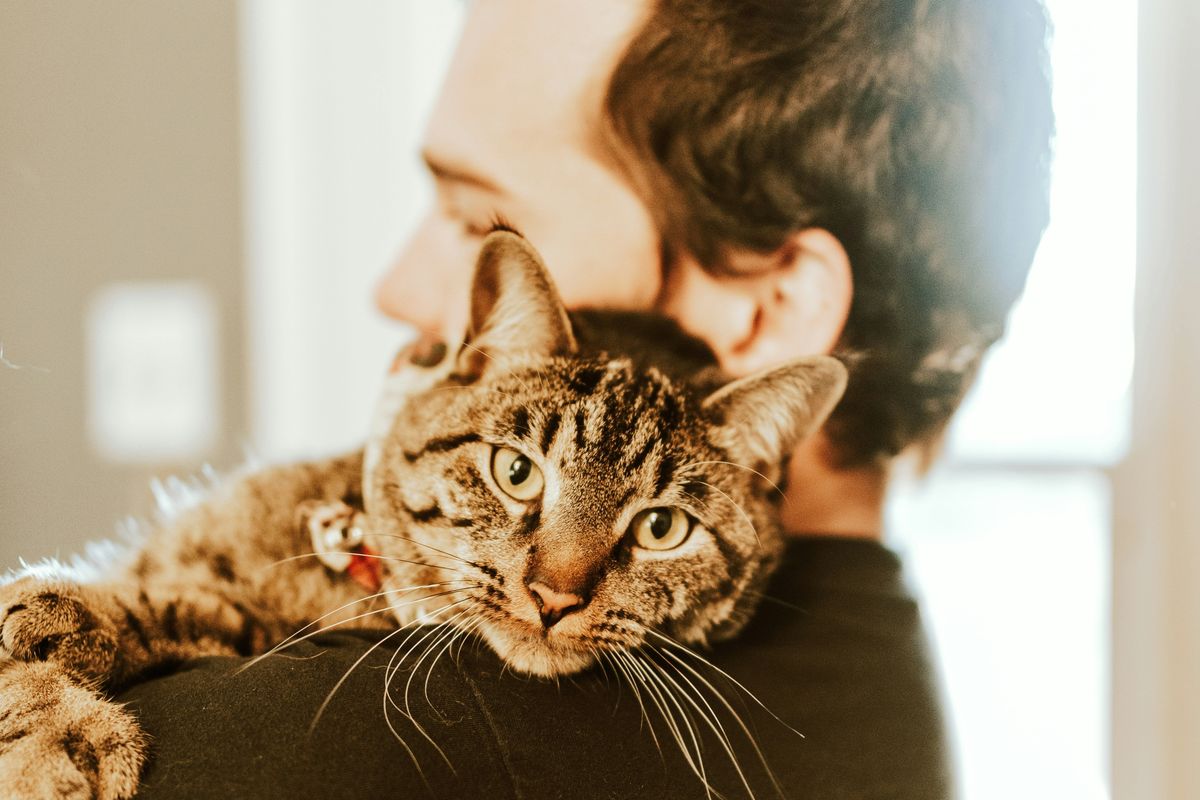States are starting to require mental health classes for all students. It’s about dang time.
Why did this take so long?

The Florida State Board of Education recently voted to require all students in the sixth grade and up to receive five hours of mental health instruction every year. Florida may have more than its fair share of questionable legislation, but this is highly commendable.
Florida isn't the first state to mandate such courses—New York, Virginia, and Maine all passed bills requiring mental health to be part of the required curriculum last school year, and more states are sure to follow suit.
It's a huge move in the right direction—and it's about dang time.
I taught in public schools fresh out of college, and even two decades ago I saw how much of a need there was for mental health education. Today, my thoughts on the matter are much more personal. Our oldest daughter spent much of her tween and teen years struggling with a mental health disorder called emetophobia—a clinical fear of throwing up. It got to the point in her mid-teens where she had a hard time doing normal, everyday things, like eating or being around people.
So we took her to a therapist. Not only did she get help with her specific phobia, but her therapist taught her so much about how her brain works and how to manage her thoughts, feelings, and behaviors. There are many things that can go haywire in people's brains, and learning how it all works and learning how to train the brain through behavior and disrupting thought patterns, was invaluable.
RELATED: This teacher's viral 'check-in' board is a beautiful example of mental health support.
I told my brother, who had been to therapy himself for a different issue, how much I had learned sitting in my daughter's sessions. "Cognitive behavioral therapy is amazing, isn't it?" he said. "I don't know why we don't teach it to all kids in schools."
"Yes!" I said. "Seriously, though, why don't we?"
I've never personally struggled with a mental health disorder, but even I got a lot out of attending my daughter's therapy sessions. How many students are out there not getting the mental health support they need and suffering in silence? How many kids are self-medicating with drugs or alcohol because they have no tools to manage anxiety or depression or other mental health issues? How many people could we help immensely by starting young and teaching some mental health tools and techniques to every kid?
Brandi Lewis, certified school counselor, licensed professional counselor, and owner of Reach Counseling Solutions, says school counselors are often overbooked due to students' mental health needs. "Our students are managing a lot of different concerns that are difficult for anyone," she says, "but for children, it can be hard to handle because there are so many other challenges that they face."
"Imagine going through the changes of puberty or relationships while living in a social media culture and a world where it's acceptable to talk about your feelings, but there's also a stigma about mental health," she adds. "For my students, they have openly mentioned that it's embarrassing to feel 'crazy.' Some of the common concerns that I've seen along with child abuse and bullying are anxiety, depression, and suicidal ideation. We complete more suicide assessments than many people may think."
Lewis says that addressing mental health in classes might help students recognize the signs of a mental health crisis so they can get the help they need early on—and also reduce the stigma surrounding mental health.
Physical education has been part of school curricula for decades, and people don't mind talking about their physical ailments. Why have we never delved into mental health education? Is it because we haven't had enough information on how to apply it to the general population? Is it because of the stigma so long associated with having mental health issues?
RELATED: A huge thanks to those who openly share their mental illnesses. You saved my daughter.
Thankfully, that stigma is starting to change in our society, slowly but surely. We hear more and more people sharing their own personal struggles with anxiety, depression, or other mental health disorders, and every time they do, it gives someone else permission to be open about their own mental health. We wouldn't even have known what our daughter's issue was if I hadn't read an article from someone sharing their emetophobia story and seen our daughter reflected perfectly in it. And as she was going through therapy, hearing about other people's experiences with counseling or managing mental illnesses helped her not feel like she was alone. She's doing great now, but we still talk about how thankful we are for the people who share their own mental health struggles.
Hopefully, adding mental health education in schools will help not only those kids who struggle with mental health issues, but also help the kids who don't better support those who do. Hopefully, it will help give kids the tools they need to manage their thoughts, feelings, and behaviors. Hopefully, it will help lessen the stigma surrounding mental illness and create a more open environment for people to share their experiences.
Hopefully, more states will follow in Florida's footsteps and start integrating mental health classes into the curriculum.
- Trump judicial nominee Wendy Vitter won't say if segregated ... ›
- A simple switch that may improve adolescent health and boost the ... ›
- Starting school too early could be dangerous for teens, even if they ... ›
- Kate Middleton continues the royal family's mental health focus with ... ›
- After losing his son to suicide, this Virginia senator knew he needed ... ›
- An educator (and National Education Association President) schools ... ›
- Upworthy ›
- The next time someone blames mass shootings on mental illness ... ›
- Upworthy ›
- Parkland students offer 7 great ideas about gun control — plus a ... ›
- Woman shares her therapist's surprisingly helpful mental health tip: 'Run the dishwasher twice' - Upworthy ›
- 8 classes that should be mandatory for all students ›
- Emetophobia is easily mistaken for generalized anxiety or anorexia - Upworthy ›
- 8 classes that should be mandatory for all students - Upworthy ›
- 'WhiteFlag' a free peer support app for mental health - Upworthy ›
- Therapist lists 15 ways kids express anxiety - Upworthy ›
- Lifestyle changes that enhance cognitive function in adults - Upworthy ›
- Delivery guy shares his new mental health app on deliveries - Upworthy ›
- Mental Health in Schools: An Overview ›
- School Mental Health ›
- Mental Health - NYC ›
- Problems at School | Association for Children's Mental Health ›
- School-Based Mental Health Services ›
- Are Schools Ready to Tackle the Mental Health Crisis? - NEA Today ›
- Mental Health in Schools | NAMI: National Alliance on Mental Illness ›
- Mental Health In Schools: A Hidden Crisis Affecting Millions Of ... ›
- National Center for School Mental Health (NCSMH) | University of ... ›
- School Mental Health - Springer ›






 Schools Out Fun GIF by Pen Pals
Schools Out Fun GIF by Pen Pals  Class in session
Class in session  Season 3 Running GIF by The Simpsons
Season 3 Running GIF by The Simpsons  Judging technique can come later. Way later. For now, just let kids create. Photo by
Judging technique can come later. Way later. For now, just let kids create. Photo by  Cheese is essentially just spoiled milk! Photo by
Cheese is essentially just spoiled milk! Photo by  It must have been fun to discover old grapes turned into wine. Photo by
It must have been fun to discover old grapes turned into wine. Photo by  Coffee fruit was making the goats a little too happy. Photo by
Coffee fruit was making the goats a little too happy. Photo by  Tomatoes were thought to be poisonous until very recently. Photo by
Tomatoes were thought to be poisonous until very recently. Photo by  Tea is one of civilization's most ancient drinks. Photo by
Tea is one of civilization's most ancient drinks. Photo by  Fried potatoes began as a replacement for fried fish. Photo by
Fried potatoes began as a replacement for fried fish. Photo by  An 11-year-old accidentally invented popsicles. Photo by
An 11-year-old accidentally invented popsicles. Photo by  Cheetos and cheese puffs have a fascinating accidental origin. Photo by
Cheetos and cheese puffs have a fascinating accidental origin. Photo by  A cat rolls its eyes. GIPHY, Saturday Night Live, NBC
A cat rolls its eyes. GIPHY, Saturday Night Live, NBC  Cat hugging person. Photo by
Cat hugging person. Photo by